Capabilities
Beacon RF retro-reflector. Provides return when illuminated with radar to provide rough positional location.
TAWDRYYARD is used as a beacon, typically to assist in locating and identifying deployed RAGEMASTER units. Current design allows it to be detected and located quite easily within a 50 foot radius of the radar system (CTX4000 or PHOTOANGLO) being used to illuminate it.
TAWDRYYARD draws 8 µA at 2.5V (20µW) allowing a standard 3 volt lithium coin cell to power it for months or years. The simplicity of the design allows the form factor to be tailored for specific operational requirements.
Future capabilities being considered are return of GPS coordinates and a unique target identifier and automatic processing to scan a target area for presence of TAWDRYYARDs.
All components are Commercial Off-the-Shelf (COTS) and so are non-attributable to NSA.
Concept of Operation
The board generates a square wave operating at a preset carrier frequency. This square wave is used to bias a microwave FET (Field Effect Transistor) on and off. When the unit is illuminated with an unmodulated Continuous Wave (CW) signal from a remote radar unit, the illuminating signal is Amplitude Modulated (AM) with the square wave.
This signal is re-radiated (backscatter), where it is picked up by the radar, then processed to recover the clock (carrier) signal. Typically, the fundamental carrier frequency is used to indicate the unit's presence, and is simply displayed on a low-frequency spectrum analyzer.
TAWDRYYARD is part of the ANGRYNEIGHBOR family of radar retro-reflectors.
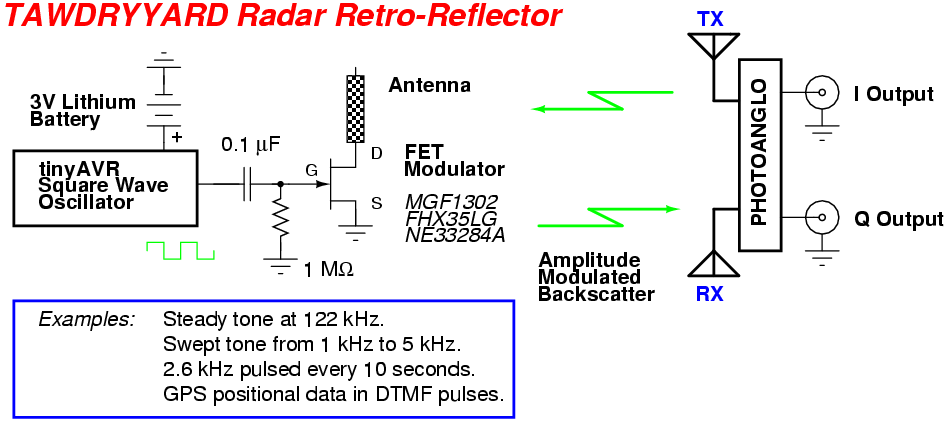
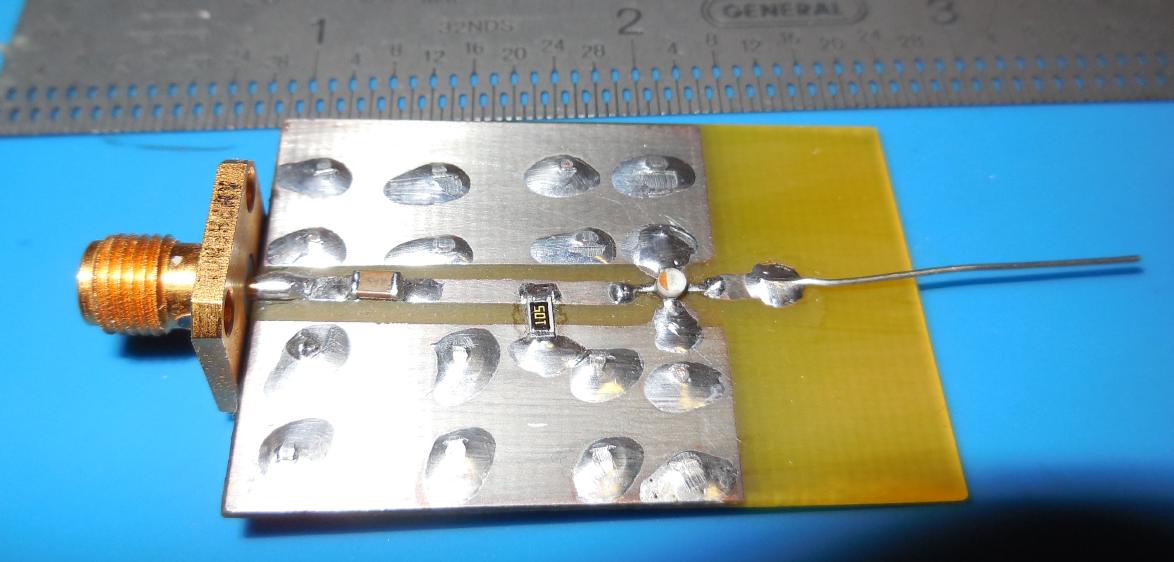
Overview of the FET modulator used in our own TAWDRYYARD radar retro-reflector experiments.
The FET is a Fujitsu FHX35LG, but just about any quality microwave FET (Mitsubishi MGF1302, etc.) will work.
The brown dot is the FET's gate. The FET's two source leads are grounded. On the FET's drain is a short piece of wire for the antenna.
These radar retro-reflector devices are essentially frequency independent, but using an illumination carrier whose 1/4-wavelength is the same as the antenna length will provide better results.
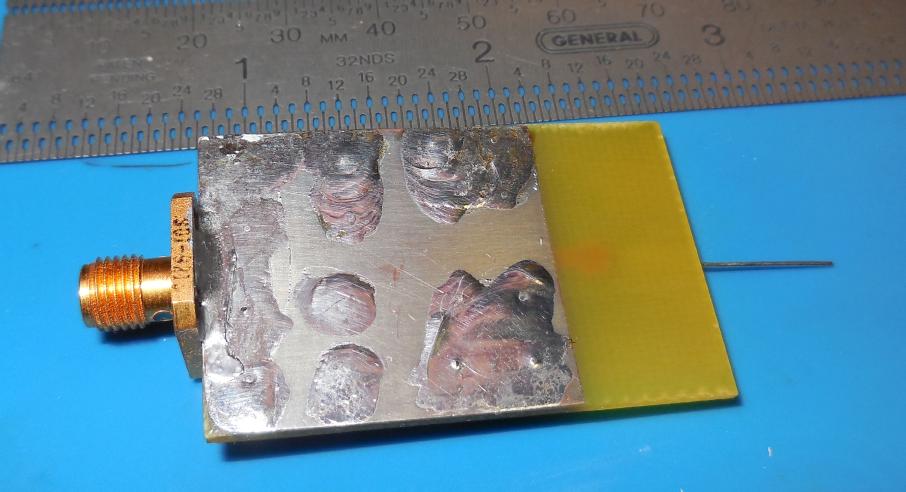
Bottom view of the FET modulator circuit.
The drain antenna should be isolated from the ground plane or anything metal which could block/attenuate the incoming RF illumination carrier and the backscattered signal.
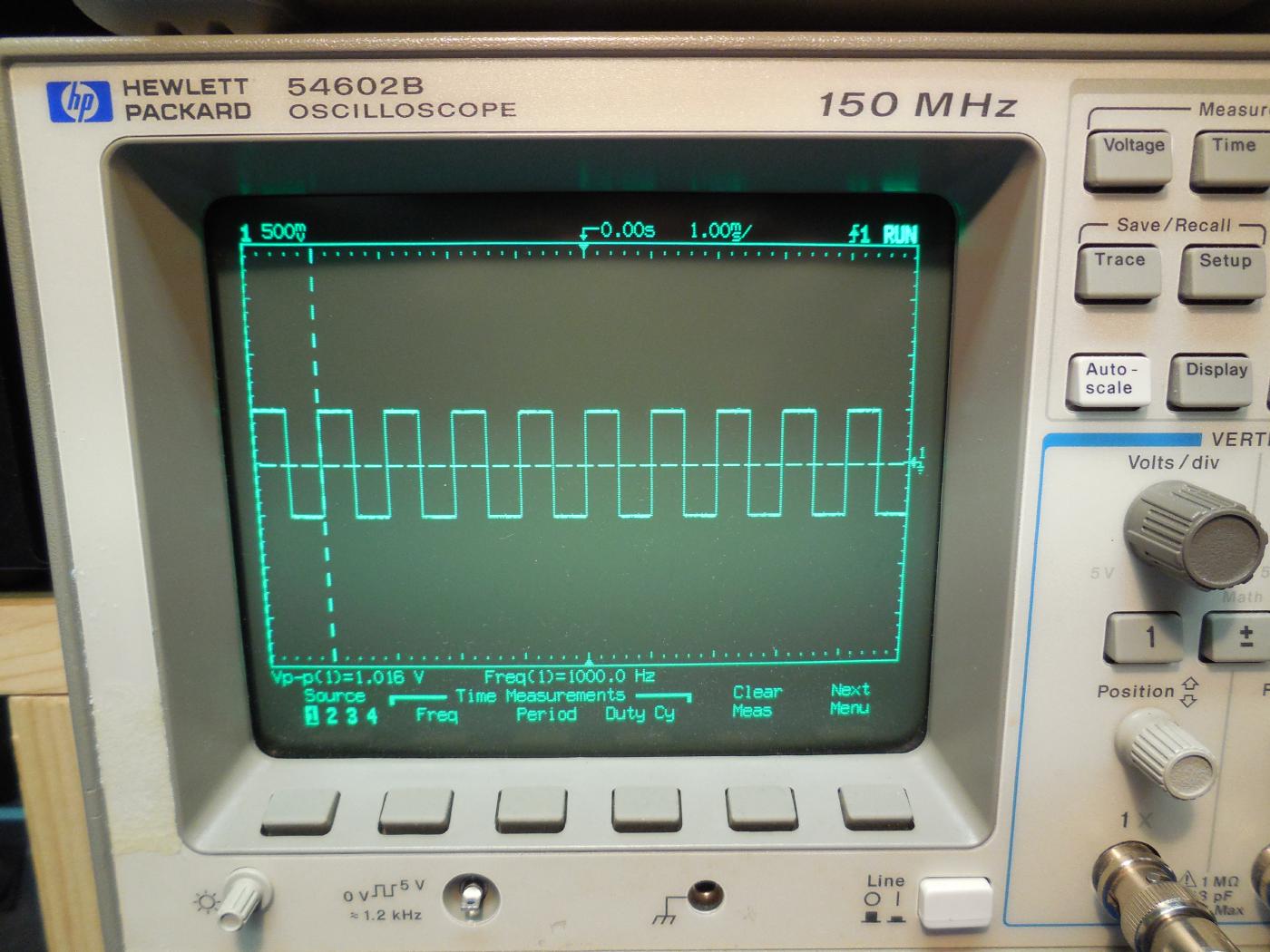
Example of the modulation used for testing.
1 kHz square wave at 1 volt peak-to-peak.
Operational TAWDRYYARD radar retro-reflectors should use specific moduation frequencies so they are discernable from common electrical interference. Avoid harmonics of 50/60 Hz, 15.75 kHz, 32.768 kHz, 100 kHz, 455 kHz, etc.
A sweeping tone, say from 1 kHz to 5 kHz once per second, will give a very distinct tone which can be received by the operator with just an audio amplifier and pair of headphones on the CTX4000 or PHOTOANGLO's I/Q outputs.
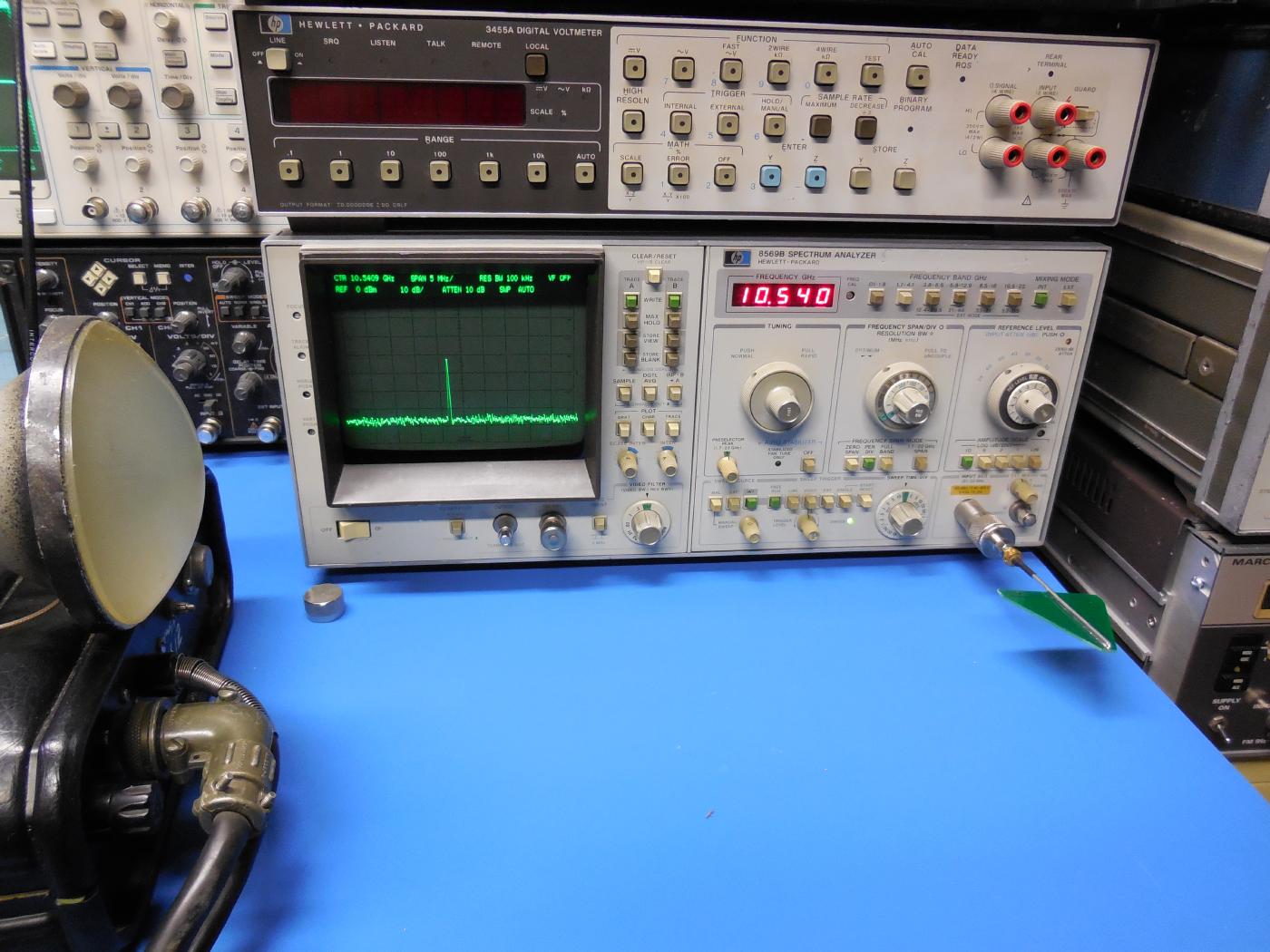
Backscatter modulation test setup, unmodulated carrier.
On the left, is the unmodulated CW illumination radar, which is a Decatur MV715 RangeMaster operating in the X-band (approximately 10.5 GHz).
The HP8569B spectrum analyzer is showing the unmodulated RF carrier and is centered at 10.540 GHz.
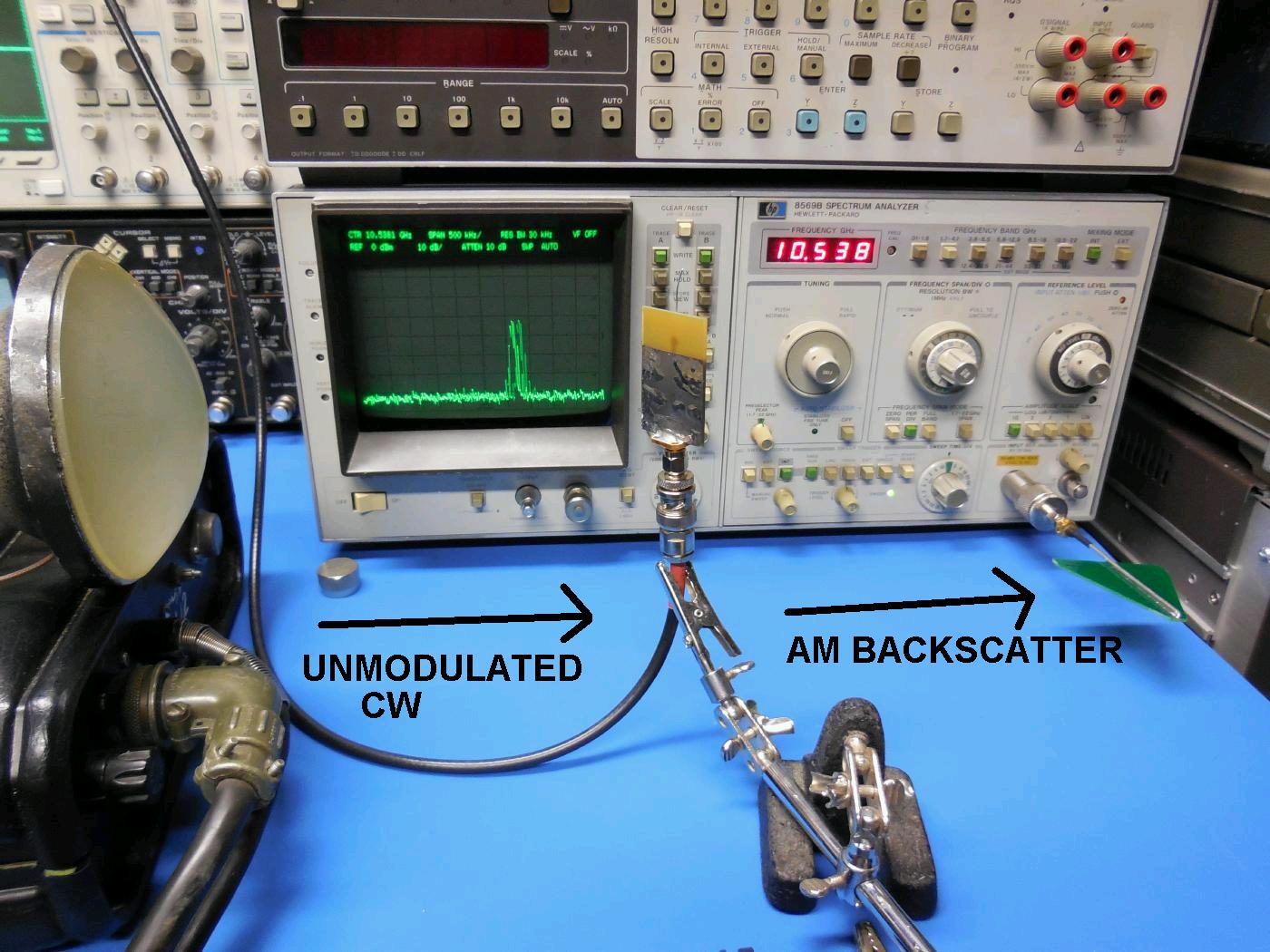
Backscatter modulation test setup.
The test TAWDRYYARD radar retro-reflector is setup inbetween the Decatur MV715 RangeMaster (left) and the spectrum analyzer's RF input (right).
The FHX35LG FET is being (gate) modulated with the 1 kHz square wave at 1 volt peak-to-peak.
The 1 kHz amplitude modulated backscatter signal is being received and displayed on the spectrum analyzer. If you were to AM demodulate the backscattered signal, you'd hear the 1 kHz modulating tone.
To detect these devices, you can use your own illumination radar to flood the area with RF and record and compare the signals to a known "good" database of interference/carriers.
Also, a Non-Linear Junction Detector (NLJD) could be used to detect the square wave generator circuit, or a VLF receiver with a ferrite loop antenna could be used to detect the residual EMI from the square wave generator circuit.
GBPPR Vision #26: Overview of the NSA's TAWDRYYARD Radar Retro-Reflector (YouTube)





